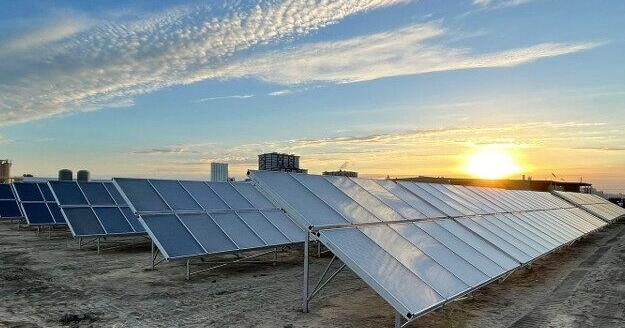(The Center Square) — Louisiana is imposing new permitting and siting standards for renewable energy projects just as solar output surges across the Midwest and South, with newly released data from the Midcontinent Independent System Operator showing record-breaking solar generation heading into this spring.
Gov. Jeff Landry signed into law House Bill 459, establishing a new permitting framework for large-scale renewable energy infrastructure, including wind, solar, and battery storage systems.
Beginning in 2026, any solar generation project in Louisiana with a footprint of 75 acres or more will require a state permit.
Permits will only be issued with proof of financial backing and a plan for dismantling the facility after its useful life.
The new law also includes strict requirements for buffers and screening.
For homes, that includes “a three hundred foot setback from the residential property line to the nearest solar device,” and a vegetative barrier “designed to conceal the development from view from adjoining properties.”
Setbacks are also mandated from public roads and navigable waters: 100 feet from the ordinary low water mark and 50 feet from the edge of the paved roadway. Parishes that have adopted their own solar ordinances may opt out of these siting standards.
A different bill that failed to make it out of the House of Representatives would have imposed a great deal more regulation.
“The language in HB459 concerning acreage permit requirements, set-backs, and vegetative barriers is far less restrictive than what was in HB615,” Jackson Voss from the Alliance for Affordable Energy told The Center Square.
HB615, by contrast, would have required permits for projects over 10 acres, mandated public notice and hearings, imposed more aggressive setback and buffer rules, and banned certain technologies and foreign ownership, among other restrictions.
Voss added that the HB415 “more or less maintains the status quo for solar in Louisiana,” by allowing parishes to either limit or incentivize solar development.
“While these may not have been the exact standards we would have recommended setting, they do not seem to be as restrictive as what was being considered by the legislature previously,” Voss said.
The law also introduces new permitting requirements for wind turbines and energy storage systems. “No battery used for renewable energy storage facilities shall be installed without the operator first obtaining a permit.”
Similarly, “No onshore wind project shall be constructed or completed without a permit.”
The provisions do not apply to residential use.
Meanwhile, solar output continues to grow across the MISO region, which includes Louisiana. According to MISO’s monthly operations report, solar generation reached 2,474 gigawatt hours in April 2025, up from just 1,101 GWh a year earlier. The March peak saw solar supplying 18.6% of MISO load in that hour — a record high.
MISO data also shows that in February 2025 alone, solar generation jumped by nearly 200 GWh, reflecting significant regional investment and deployment.
Final rules for the new permitting system must be adopted by August of 2026.
“A lot of this will also depend on Department of Energy & Natural Resources implementation and enforcement,” Voss said.
The new rules will apply to projects that begin construction after Jan. 1, 2026. Older facilities must come into compliance “to the extent practicable” by August 1, 2027.
Other provisions include a ban on spraying “any chemical that is not approved for agricultural application” and noise restrictions: “Noise levels at the property line of the facility shall not exceed ten A-weighted decibels above the ambient noise level.”


